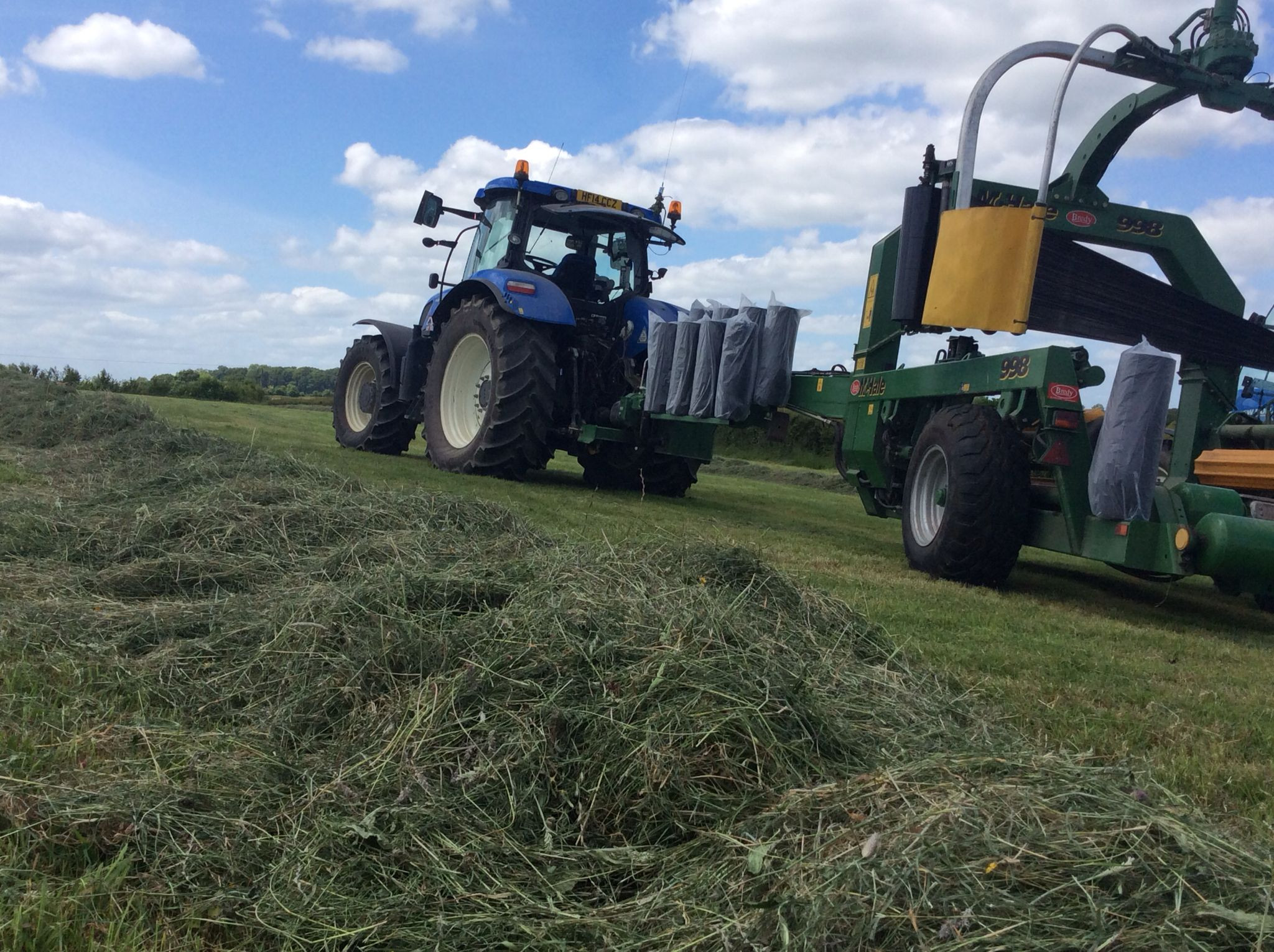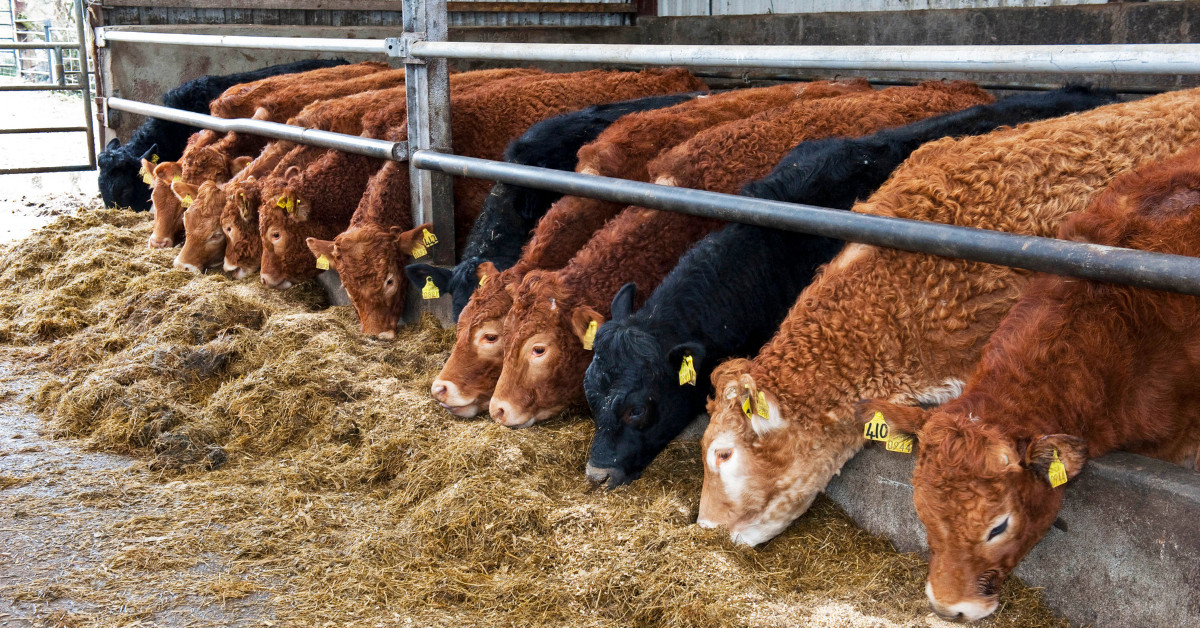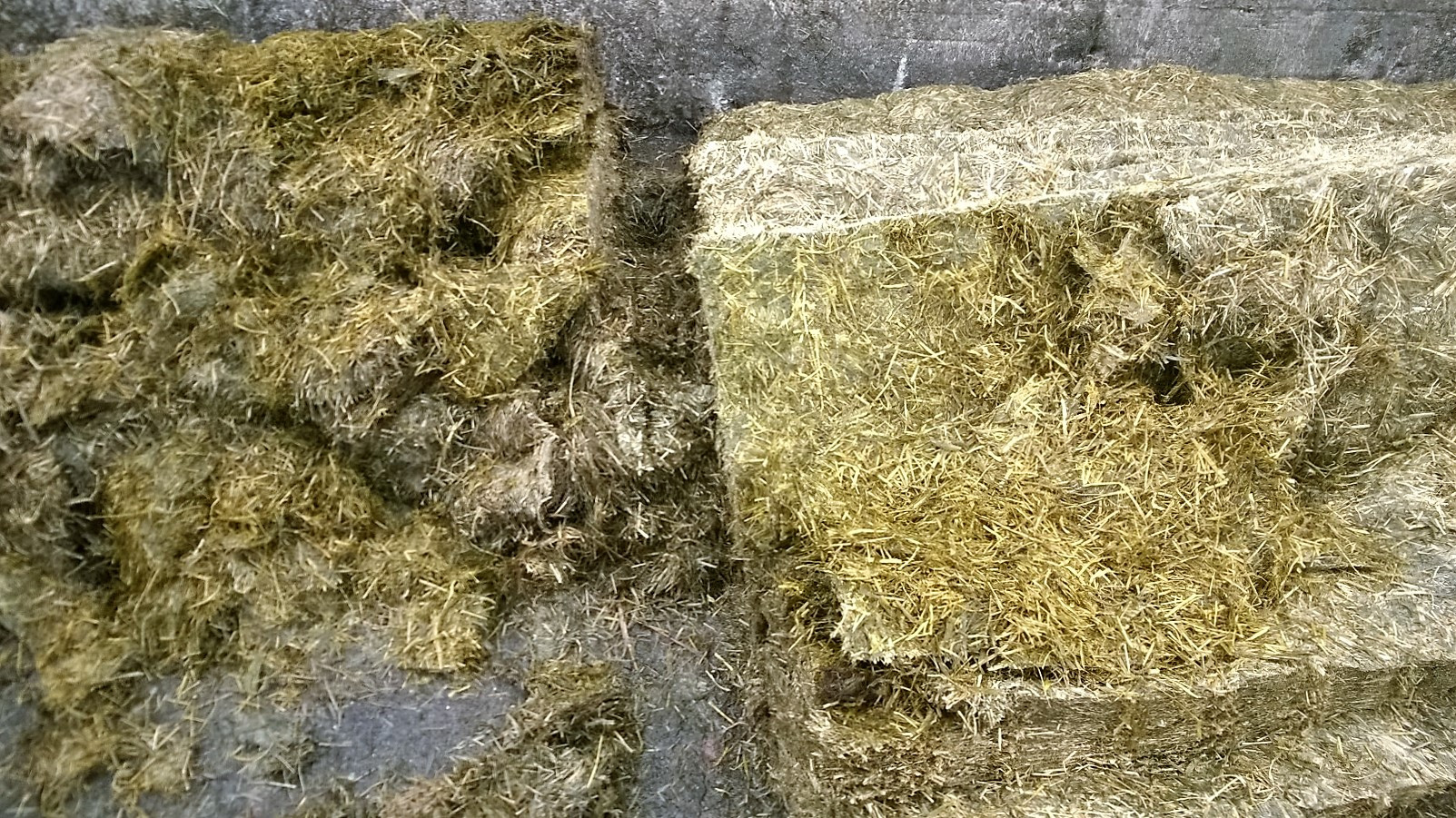Stemming from poor quality silage and inadequate feeding programmes, the winter period often marks a period of underperformance on dairy-beef farms.
Tommy Cox, Advisor on the Teagasc DairyBeef 500 Campaign, looks at the importance of silage testing – the starting point in ensuring your weanlings and finishing stock perform as they should over the winter months.
The recent fine spell was well and truly welcomed by farmers right around the country and, in some ways, it has potentially somewhat salvaged what was a very difficult summer.
As we head into October, the housing of stock will become inevitable in the coming weeks. As stock move indoors, grass silage will contribute to a high proportion of the diet of animals over the course of the housing period.
Grass silage will typically make up around one-quarter to one-third of total feed dry matter (DM) consumed on drystock farms over the year. When compared to grazed grass, it is quite expensive to produce. However, when taken as part of an integrated grazing system, it is good value compared to concentrates and alternative forages.
While most beef farms have tended to secure an adequate supply of silage tonnage in recent years, average silage quality, as measured by dry matter digestibility (DMD), remains consistently poor on drystock farms at 65-67% DMD.
Silages of such quality are only capable of supporting a daily live weight gain of 0.3-0.4kg/day without the inclusion of meal, well behind the targets set for steer and heifer weanlings of 0.6kg/day, finishing heifers of 0.9kg/day and finishing steers of >1kg/day.
Why Silage Testing Matters
Completing a silage analysis is the first step to seeing what quality silage is available. Once this has been completed, a feeding strategy can be put in place to ensure that the nutritional requirements of stock are met and that the desired level of performance is achieved over the winter. Visual assessment alone is not adequate to determine silage quality. A laboratory test will provide accurate information on silage nutritive value and preservation, thus allowing informed concentrate feeding decisions to be made. Table 1 outlines the key parameters tested and the desired target in each area.
Key Parameters of Silage Analysis
Dry Matter Digestibility (DMD)
DMD is a crucial indicator of the energy content of silage. A higher DMD means that the animal can digest and utilize more of the nutrients from the silage, leading to better weight gain and overall performance. The ideal DMD for beef cattle is 70% or higher.
Crude Protein (CP)
CP reflects the protein content of the silage. A sufficient protein level is essential for muscle growth and milk production in dairy cows. For beef cattle, a CP of 12-14% is generally considered optimal.
Ash Content
Ash content represents the mineral content of the silage. A higher ash content indicates a greater amount of minerals, which can affect the palatability of the silage. It is recommended to keep the ash content below 8%.
Acid Detergent Fibre (ADF)
ADF reflects the amount of indigestible fibre in the silage. A higher ADF content means that the animal has to work harder to digest the silage, which can negatively impact rumen function and feed intake. Aim for an ADF content below 35% for optimal digestion.
Neutral Detergent Fibre (NDF)
NDF represents the total amount of fibre in the silage. While some fibre is necessary for rumen health, a higher NDF content can lead to reduced feed intake and slower digestion. Generally, a NDF content of 45-55% is suitable for beef cattle.
The Benefits of High-Quality Silage
Calf-to-beef systems require superior quality silage, as animals have to perform at every stage of the production system. A strong emphasis on both silage quality and forage analysis is placed amongst the participating farmers in the Teagasc DairyBeef 500 Campaign, and this generally pays off as they are doing an excellent job in terms of silage quality.
Silage analysis is currently ongoing on all Teagasc DairyBeef 500 farms and results to date are positive; the majority of the silage is testing with a DMD of 70 or greater. This is the type of silage that is required on these farm, otherwise high levels of concentrate supplementation will be needed.
Ensuring Accurate Silage Testing
Silage samples must be taken carefully to ensure correct results. A period of 5-6 weeks should elapse between ensiling and sampling. A long core sampler should be used with 3-5 cores taken from well-spaced points on or between diagonals on the pit surface. Alternatively sample an open pit by taking nine grab samples in a ‘W’ pattern across the pit face. When testing bales, a number of samples from each batch are needed to get a representative sample.
Making Sense of the Results
Once the results are in, it’s crucial to interpret them correctly. A higher DMD indicates a more digestible silage, while a lower DMD suggests a lower energy content. You can use this information to adjust the amount of concentrate feed provided to your animals.
The Impact of Poor Silage Quality
As mentioned earlier, poor silage quality can lead to reduced performance in cattle. In addition to slower weight gain, poor silage can also cause a number of health problems, such as:
- Respiratory Issues: Low-quality silage can contribute to respiratory problems, such as pneumonia, as it can contain high levels of dust and mold. This is especially important when considering the housing period.
- Digestive Issues: Poor silage can lead to digestive upsets, such as bloat and acidosis. This can result in reduced feed intake, slower weight gain, and even death.
- Immune Suppression: Poor silage can compromise the animal’s immune system, making them more susceptible to disease.
Taking Action
If your silage analysis reveals that your silage quality is sub-par, there are a few things you can do to improve it:
-
Improve Harvesting Practices: Ensure that your silage is harvested at the correct stage of maturity, with proper chopping and packing. Avoid wilting too long in the sun, as this can lead to nutrient loss.
-
Implement Good Storage Practices: Proper storage is key to preserving the quality of your silage. Ensure your pit or bunker is properly sealed and free from leaks.
-
Consider Supplementing: You may need to supplement your animals with additional feed, such as concentrates, if the silage is low in nutrients. This is especially important for animals in high performance phases, such as finishing steers.
Conclusion: Silage Testing - A Wise Investment
Silage testing is an essential investment for any beef or dairy farmer who wants to maximize their profits. By investing in regular silage testing and implementing appropriate management practices, you can ensure that your animals receive the high-quality nutrition they need to perform at their best. This can help to improve animal health, reduce feed costs, and increase your overall farm profitability.
Investing in silage testing is a small cost that can have a significant positive impact on your bottom line. This is particularly crucial during the winter housing period.


















